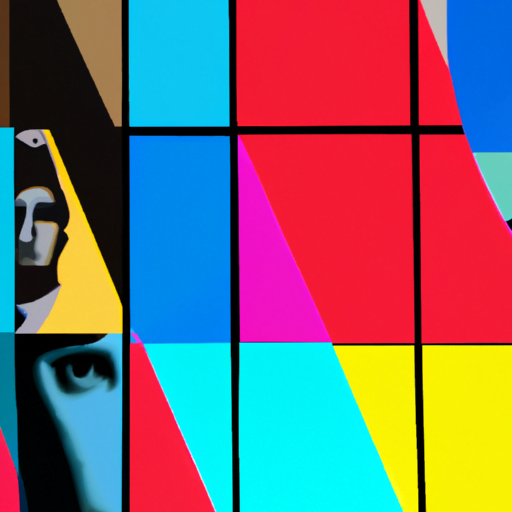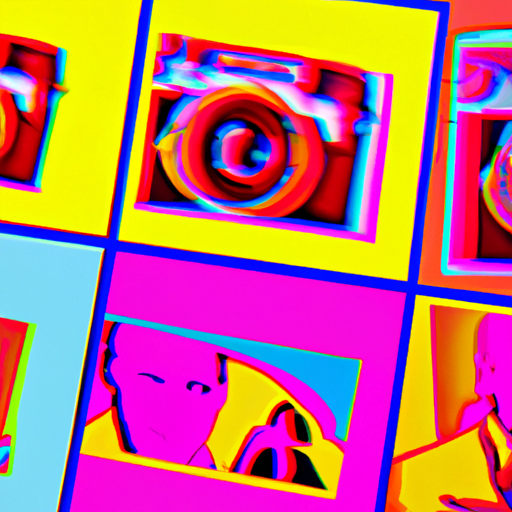
-
Table of Contents
- Psychedelic Art and Its Influence on Graphic Design
- The Origins of Psychedelic Art
- Key Characteristics of Psychedelic Art
- The Influence of Psychedelic Art on Graphic Design
- Color Usage
- Abstract and Surreal Forms
- Optical Illusions
- Complex Patterns
- Typography
- Case Studies: Psychedelic Art in Graphic Design
- 1. The Grateful Dead
- 2. Milton Glaser’s Bob Dylan Poster
- 3. Nike Air Max 90 “Bacon”
- Conclusion
Psychedelic Art and Its Influence on Graphic Design

Psychedelic art is a unique and captivating form of artistic expression that emerged in the 1960s and continues to influence various creative fields today. One area where its impact is particularly evident is graphic design. This article explores the origins of psychedelic art, its key characteristics, and how it has shaped the world of graphic design.
The Origins of Psychedelic Art
Psychedelic art originated in the counterculture movement of the 1960s, which was characterized by a rejection of mainstream values and a search for alternative ways of living. This movement was heavily influenced by the use of psychedelic substances such as LSD, which were believed to expand consciousness and provide a gateway to spiritual experiences.
Artists of this era sought to capture the hallucinatory and mind-altering effects of these substances through their artwork. They aimed to create visual representations of the inner workings of the mind, often using vibrant colors, intricate patterns, and distorted forms to convey a sense of otherworldliness.
Key Characteristics of Psychedelic Art
Psychedelic art is characterized by several key features that set it apart from other art movements:
- Vibrant Colors: Psychedelic art often employs a bold and vivid color palette, with hues that are intense and saturated. These colors are used to evoke strong emotional responses and create a sense of visual stimulation.
- Abstract and Surreal Forms: Artists working in the psychedelic style often distort and manipulate forms, creating abstract and surreal imagery. This allows them to convey the altered states of consciousness experienced during psychedelic trips.
- Optical Illusions: Optical illusions are a common element in psychedelic art. Artists use techniques such as moiré patterns, repetition, and mirroring to create visual effects that appear to move or vibrate.
- Complex Patterns: Psychedelic art frequently incorporates intricate and repetitive patterns. These patterns can be inspired by various sources, including nature, sacred geometry, and Eastern art traditions.
- Typography: Psychedelic art often features unconventional and highly stylized typography. Letterforms may be distorted, warped, or arranged in unconventional layouts to create a sense of visual disorientation.
The Influence of Psychedelic Art on Graphic Design
The impact of psychedelic art on graphic design has been significant and far-reaching. Its influence can be seen in various aspects of contemporary graphic design, including:
Color Usage
Psychedelic art’s vibrant color palette has had a lasting impact on graphic design. Many designers today embrace bold and saturated colors to create visually striking designs that grab attention and evoke strong emotional responses. This use of color is particularly prevalent in advertising, where brands aim to stand out in a crowded marketplace.
Abstract and Surreal Forms
The abstract and surreal forms found in psychedelic art have also influenced graphic design. Designers often incorporate elements of distortion and manipulation to create visually intriguing compositions. This approach can be seen in album covers, poster designs, and digital artwork, where artists aim to capture the viewer’s attention and create a sense of intrigue.
Optical Illusions
Psychedelic art’s use of optical illusions has also found its way into graphic design. Designers employ techniques such as moiré patterns, kinetic typography, and animated graphics to create visually dynamic and engaging designs. These techniques are particularly effective in web design and digital advertising, where interactivity and movement can enhance the user experience.
Complex Patterns
The intricate patterns often found in psychedelic art have become a popular design element in graphic design. These patterns can be seen in various applications, including textiles, packaging, and branding. They add a sense of visual interest and depth to designs, creating a rich and immersive experience for the viewer.
Typography
Psychedelic art’s unconventional approach to typography has also left its mark on graphic design. Designers often experiment with typography, pushing the boundaries of legibility and arrangement. This can be seen in logo designs, poster layouts, and editorial designs, where typography plays a central role in conveying the desired message or aesthetic.
Case Studies: Psychedelic Art in Graphic Design
To further illustrate the influence of psychedelic art on graphic design, let’s explore a few notable case studies:
1. The Grateful Dead
The Grateful Dead, a legendary American rock band, embraced psychedelic art in their album covers and concert posters. Their iconic “Skull and Roses” album cover, designed by Stanley Mouse and Alton Kelley, features intricate patterns, vibrant colors, and a surreal representation of a skull. This design perfectly captures the spirit of the band’s music and the counterculture movement of the time.
2. Milton Glaser’s Bob Dylan Poster
In 1966, graphic designer Milton Glaser created a now-famous poster for Bob Dylan’s greatest hits album. The poster features a stylized illustration of Dylan with vibrant, swirling colors emanating from his hair. This design became an iconic representation of the psychedelic era and is still widely recognized today.
3. Nike Air Max 90 “Bacon”
In 2021, Nike released a limited edition version of their Air Max 90 sneakers in collaboration with the New York City sneaker boutique, Dave’s Quality Meat. The design, known as the “Bacon” colorway, features a psychedelic-inspired pattern reminiscent of the vibrant and abstract art of the 1960s. This collaboration demonstrates how psychedelic art continues to inspire contemporary designers and brands.
Conclusion
Psychedelic art has had a profound and enduring influence on graphic design. Its vibrant colors, abstract forms, optical illusions, complex patterns, and unconventional typography have shaped the way designers approach their craft. From album covers to advertising campaigns, the impact of psychedelic art can be seen in various aspects of contemporary graphic design. By embracing the spirit of experimentation and pushing the boundaries of visual expression, designers continue to draw inspiration from this captivating art movement.
